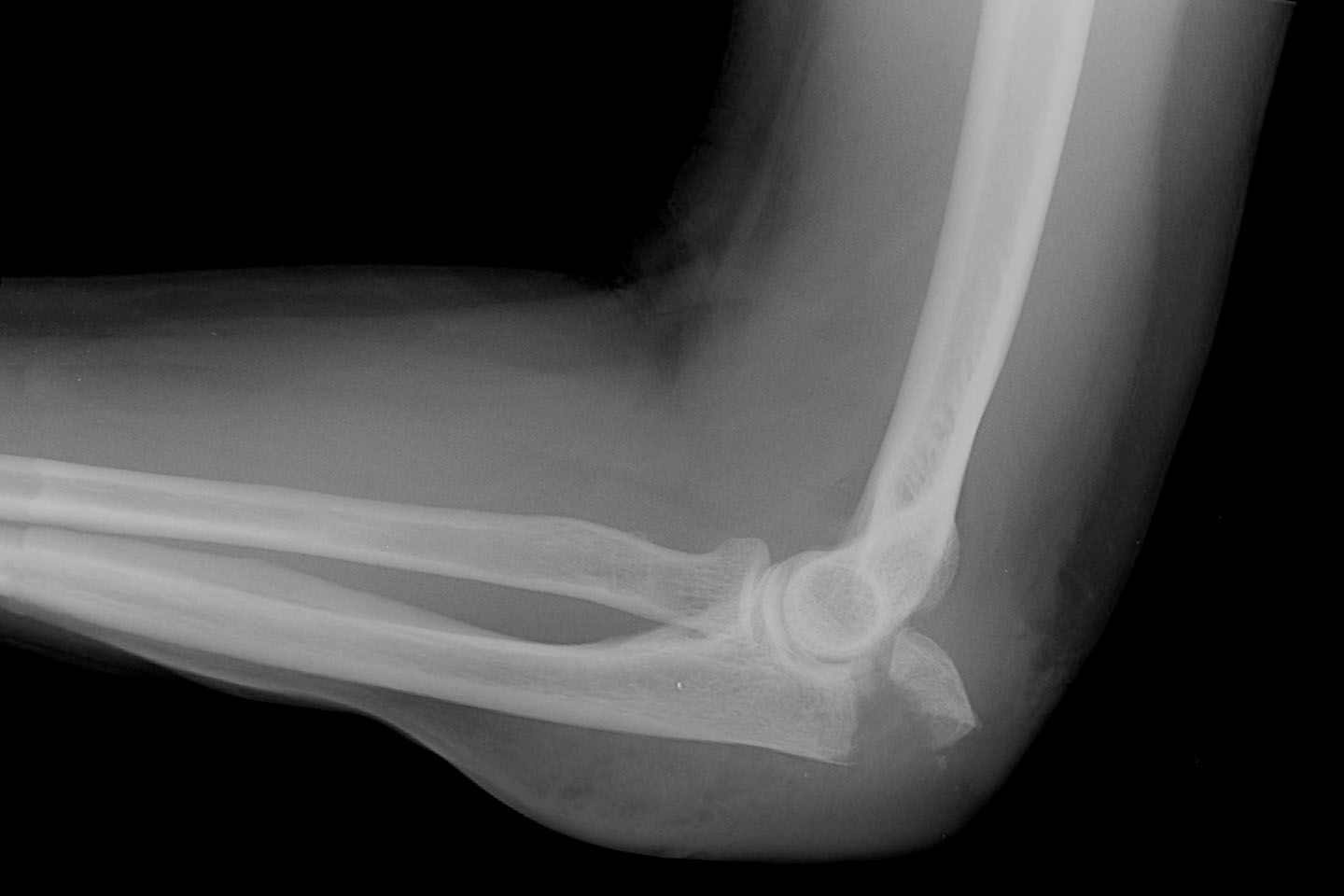An elbow fracture is a serious joint injury that can lead to severe pain, swelling, bruising, and even complex damage to the bones and surrounding tissues.
An orthopedic surgeon with over a decade of experience, Dr. Gregg A. Vagner can provide surgical and non-surgical treatment to repair the damage for patients in Austin and Cedar Park, TX.
Do you need to seek treatment for an elbow fracture?
What is an Elbow Fracture?
Technically speaking, you cannot break a joint. Rather, an elbow fracture affects any of the three bones that fit together to form the joint: the humerus (upper arm bone), ulna (forearm bone on the pinky side of the arm), or the radius (forearm bone on the thumb side of the arm). While some breaks are simply cracks, others are severe enough to displace large sections of bone.

The Different Types of Elbow Fractures
Fractures are usually classified by the location:
- Olecranon fractures: These breaks affect the ulna, the bone on the outside of your forearm. Its far end, the olecranon, forms the pointed tip on your outer elbow when you bend your arm. Because this end of the bone is not protected by soft tissue, it is easily broken during a fall.
- Radial head fractures: The most common type of elbow fracture, this break usually occurs at the end of the radius, the bone on the inside of your forearm. This bone often breaks when you catch a fall on an outstretched arm and can make it difficult or impossible to rotate your arm.
- Distal humerus fractures are located on the bottom of your humerus, the bone in your upper arm. Because they usually only occur if you fall on a bent or completely straight elbow, they are much less common than the other types of elbow fractures. The most obvious sign of this fracture is a looseness or unsteadiness in the joint when putting weight on the arm.
The type and severity of the break will determine the most appropriate course of treatment.
Treatment Options for Your Fractured Elbow
Dr. Vagner will first carefully examine your elbow and the location of the fracture. Whenever possible, he will treat your broken bone with a non-invasive option. Immobilization with a cast, splint, or sling is one of the simplest and most effective solutions. This protocol will give your arm a chance to rest so that the pieces of bone can knit together.
Immobilization using a cast, splint, or sling is one of the simplest and most effective solutions.
If your fracture is severe or if a bone is displaced, the doctor may recommend surgery, instead. During an open reduction and fixation procedure, Dr. Vagner will create an incision in your arm to access the bone and place metal screws or plates to fix the pieces back in their proper positions. Occasionally, your joint may be too damaged for repair. In these rare cases, Dr. Vagner can perform joint replacement, if needed.
Whether your initial treatment is surgical or non-surgical, it is important to work with an experienced physical therapist afterward to prevent muscle atrophy. Even before your cast comes off or you have recovered from surgery, physical therapy can strengthen your muscles and help you regain the full range of motion in your arm.
Gregg A. Vagner, M.D.

Dr. Vagner is a double board-certified orthopedic and hand surgeon who combines the latest research and techniques to treat the hands, wrists, and elbows. His accolades and roles in his field include:
- Distinguished Surgeon of the Year Award - Austin Area Association of Perioperative Medicine
- Clinical Assistant Professor of Surgery in Perioperative Care - Dell Medical School
- Hand Surgery Consultant - University of Texas Athletic Department
To schedule an appointment at any of our office locations, reach out to us online or call (512) 454-4561.



